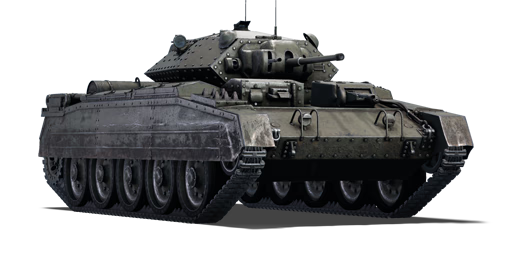The Tank, Cruiser Mark VIA, Crusader II (A15) is the second variant of the A15 Crusader cruiser tank family. The Crusader light tanks were one of the major British cruiser tank families during World War II. Over 5,000 Crusader tanks of all variants were produced, and they contributed significantly to British triumphs in the North Africa campaign. The chassis of this light tank was modified in order to produce anti-aircraft, fire support, observation, communication, bulldozer, and recovery vehicle variants, although it would not see active action outside of Africa. The first Crusader I tanks entered service in 1941, and while manoeuvrable, they were severely lacking in armour and firepower. The Crusader II followed with thicker armour but the same armament as the Crusader I: a 40 mm Ordnance QF 2-pounder tank gun.
Introduced in Update 1.55 "Royal Armour", the Crusader II is a capable short-range light tank. It is armed with a fast-firing 40 mm Ordnance QF 2-pounder tank gun, which is ideal for knocking out tanks with a cramped interior and crew members that are close to each other. It is an enjoyable light tank to play with because of its quick reload, primitive vertical gun stabilizer, and strong handling. Handling is substantially improved over the A13 cruiser tanks since cross-country performance is much better and the vehicle does not slide during abrupt breaking. Given its low profile and lack of armour, driving and fighting in the open field should be avoided whenever possible, unless there is enough cover or the terrain is shaped in such a way that the hull-down tactics, which this tank excels at, can be used. The tank also boasts good gun depression and a difficult to hit turret design.















